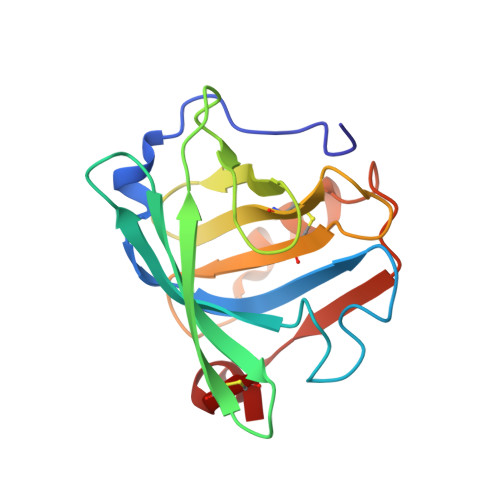Binding of Chloroquine to Whey Protein Relieves Its Cytotoxicity while Enhancing Its Uptake by Cells.
Yao, Q., Xing, Y., Ma, J., Wang, C., Zang, J., Zhao, G.(2021) J Agric Food Chem 69: 10669-10677
- PubMed: 34463093
- DOI: https://doi.org/10.1021/acs.jafc.1c04140
- Primary Citation of Related Structures:
7ER3 - PubMed Abstract:
Chloroquine (CQ) is a famous medicine for treatment of diseases including malaria and pneumonia caused by COVID-19, but gastrointestinal disorder caused by its oral administration is a great concern. Milk is usually recommended to be taken with CQ to reduce such effect. However, the mechanism underlying this phenomenon remains unknown. Here, we found that β-lactoglobulin (β-LG), α-lactalbumin (α-LA), bovine serum albumin (BSA), and lactoferrin (LF) in whey proteins were able to interact with CQ to form complexes as suggested by fluorescence resonance energy transfer (FRET) and molecular docking. Indeed, the crystal structure revealed that β-LG is bound to CQ through hydrophobic interactions and hydrogen bonding with a ratio of 1:1. Consequently, the formation of these protein-CQ complexes not only reduced the cytotoxicity of chloroquine to the stomach and gut cells but also facilitated its uptake by cells. This work gave an example to understand the relationship between food and drug.
Organizational Affiliation:
Key Laboratory of Functional Dairy, Ministry of Education, College of Food Science and Nutritional Engineering, China Agricultural University, Beijing 100083, China.















